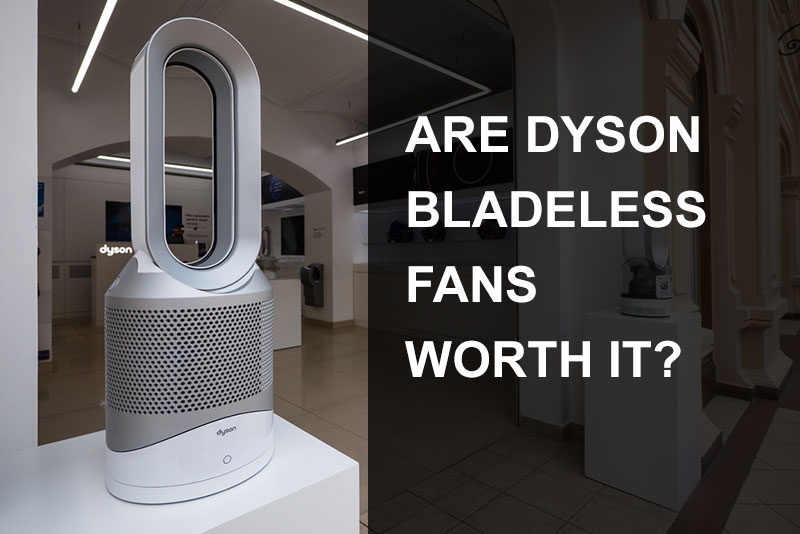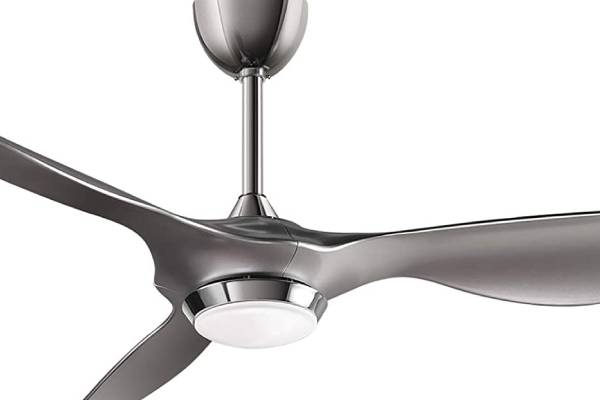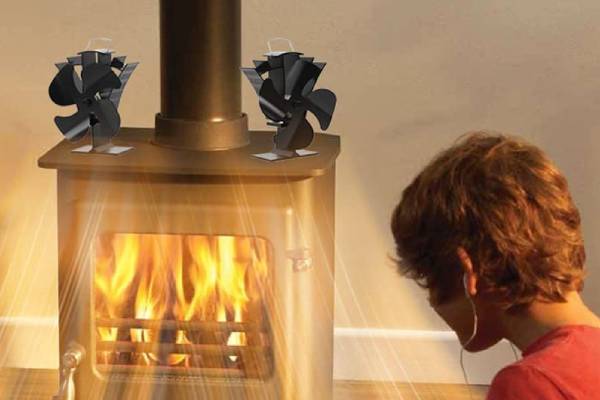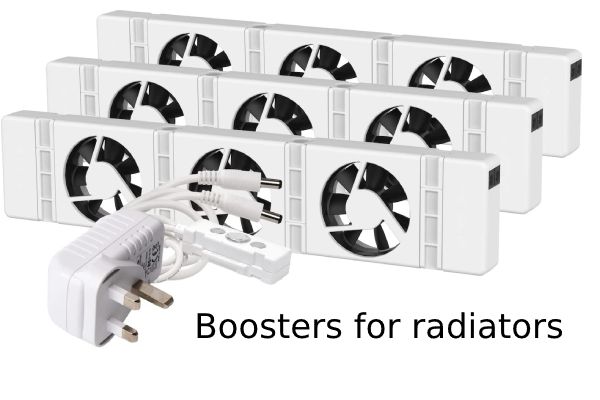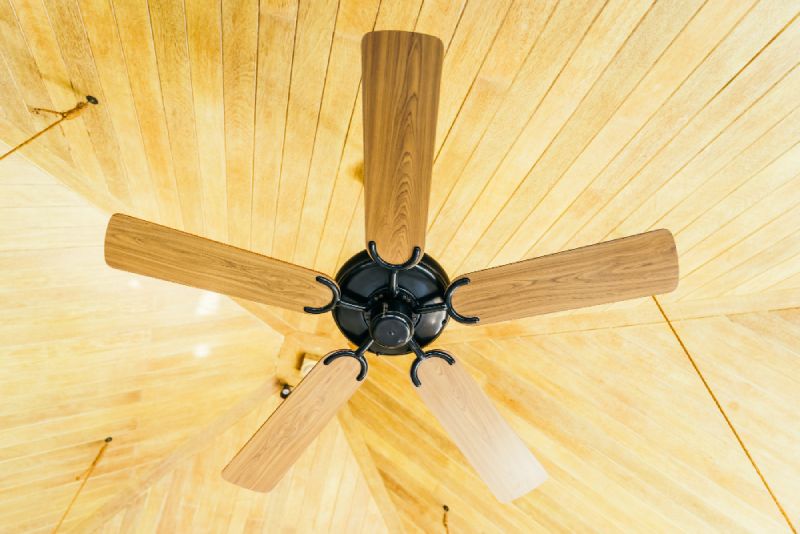Dyson bladeless fans have been a hot topic lately and have soared in popularity in recent years. Most of you have heard of them, but might not be fully aware of what they are and how they work. You might also be wondering ‘are they even worth it or are normal fans just as good?’
Well, are Dyson bladeless fans worth it? Maybe. Dyson bladeless fans are expensive and for most people, they probably aren’t worth it on balance. Whilst they are more energy-efficient, quieter and look better than normal fans, this comes at a significant cost. If however, you are looking for unrivaled performance and high-end looks, then a Dyson bladeless fan may be right for you. Hopefully, after reading this article you will walk away knowing everything you need to know about these devices and whether they are worth it for YOU.
What is a Dyson Bladeless Fan?
A bladeless fan is what it says, a bladeless fan! Well, it isn’t quite that simple. Contrary to the name, they do actually have blades, they are just hidden inside the device where you can’t see them. Technically these fans are called air multipliers and the concept has been around since the 1980’s Only recently however did James Dyson utilise the concept to create the fans we all know today.

Dyson AM07 Cooling Tower Fan
- Floor Fan
- 64 dB noise level
- 56 watts
- Safe – no spinning blades
- White [Energy Class A]
How do Dyson Bladeless Fans Work?
A motor powers an internal fan which sucks in air at the base of the fan. This air is then blown into the ring and out through a very thin slit. This isn’t the end of the story however as there are other effects at play. The Curved shape of the inner wall of the fan creates an area of negative pressure, much like an airplane wing. This draws nearby air into the flow and ‘multiplies’ the original flow. Because of this multiplication effect, even more air from behind the fan is pulled In. We call this, the ‘Coandă’ effect and it can multiply the original air intake by up to 15x according to Mr. Dyson himself.
Bladeless Fan v Normal Fan
So why have bladeless fans become so popular lately? This is a good question and the answer lies in how well they stack up against regular fans. Bladeless fans, particularly the Dyson variety blow conventional fans out of the water in key areas. These include – 1) Noise, 2) Efficiency, 3) Airflow, 4) Style and 5) Safety
1) Noise
It is no secret that bladeless fans are significantly quieter than regular fans. Normal fans put out a lot of noise, mostly due to the turbulence created in the air by large blades. The sound level of domestic fans ranges from 30 to 70 dB(A) depending on the model.
Dyson fans are significantly quieter than this. They are quieter because the internal fans are well insulated and the resultant airflow is continuous. It is worth noting that bladeless fans produce a consistent stream of air comparable to white noise. In comparison, normal fans produce a choppy whooshing sound.
2) Efficiency
Bladeless fans are known for their efficiency, both in terms of electricity usage and m3 of air moved per second. Geek.com performed some tests on the Dyson AM06 and found that the volume of air moved was equal to a regular £60 fan and double a £13 fan. The Dyson produced 10dB less noise and used a tiny 20W versus 60W and 40W for the £60 and £13 fans respectively. This makes the Dyson SIGNIFICANTLY cheaper to run than most regular fans.
Let’s break this down further using current UK energy tariffs. Assuming all three fans run for 8 hours a day at the above wattage, the Dyson would cost 3p a day, the £60 fan would cost 9p and the £13 fan 6p. This doesn’t sound like much does it? You would be wrong to assume this as these costs add up throughout the year. The table below shows the energy costs of each fan over 1 year assuming they are used 8 hrs a day.
| Fan | Wattage | £/day (8hrs) | £/year |
|---|---|---|---|
| Dyson AM07 | 20w | 3.0p | £11 |
| Regular £13 fan | 40w | 5.9p | £21 |
| Regular £60 fan | 60w | 8.9p | £32 |
*Calculated using the UK Average rate of 18.54p/kWh (December 2019 tariff)
So what does the table tell us? It tells us that The Dyson AM07 would save us roughly £21 a year in electricity costs compared to a regular 60W fan. This would equate to over £100 over five year period! You must seriously consider this potential energy saving if you are thinking of buying a bladeless fan. A more expensive fan such as the Dyson might cost more upfront but it could at least partially pay for itself in energy savings!
3) Airflow
You would expect the Dyson AM07 to be the clear winner on airflow. This isn’t totally the case, however. In the above study, the mid-range fan and the Dyson pumped out comparable cubic feet per minute (CFM). Both had a significantly higher CFM than the cheap fan. It is probably worth noting however that the Dyson AM07 will have more speed settings than low to mid-range fans, automatic oscillation is also rarely included in cheaper models.
Whilst the Dyson and mid-range fans might be comparable in airflow, air flow “quality is a different story. When we say “airflow quality” we mean the presence or lack of turbulence in the airflow. You have probably noticed that a bladed fan tends to hit you in waves, this is due to the shape of the blades. Bladeless fans however have continuous unbroken air streams. This is a benefit because it can create a more pleasurable environment for sleeping and is generally quieter.
4) Style
Let’s be honest here, bladeless fans look WAY cooler than conventional fans. The higher price of a bladeless fan certainly includes the ‘cool factor’ (get it?). Bladeless fans, particularly high-end ones such as the Dyson AM07 are commonly seen in board rooms, doctors’ offices and other trendy places. Regular fans don’t always look ‘bad’ per se but most people agree that bladeless fans look much better and are considered trendy.
5) Safety
Safety is a key consideration for many people looking to purchase a fan. Whilst it may not be relevant for many of us, people with pets and children may put safety above all else. Naturally, the primary cause of fan-related injuries comes from the moving blades. Bladeless fans eliminate this cause of injury and greatly reduce the chances of accidents.
Is a Bladeless Fan Worth it For You?
You now know quite a bit about bladeless fans, how they work and what they benefits are compared to a regular fan. We have prepared the below questionnaire to help you establish if you should get a bladeless fan or a regular fan.
Question 1 – Do you want a quiet fan?
As we mentioned earlier, bladeless dans can be significantly quieter than their regular counterparts, particularly at higher speeds. If you need a quiet fan to use in a bedroom or child’s room for example then you might want the quietest fan possible.
Question 2 – Do you care about energy efficiency?
A bladeless fan can save you a lot of money in electricity costs. Like we saw earlier, assuming you use it for 8 hours a day for a whole year, a bladeless fan like the Dyson AM07 could save you up to £20 a year. This may differ however if you use it less than this. For example, if you used the fan on average 2 hours a day the savings would be a mere £5 a year. Alternatively, if you would use it more than 8 hours a day then your savings will be bigger. You need to decide if your potential energy savings would make a bladeless fan a more or less viable choice for your situation.
Question 3 – Do you value style?
If you want something stylish and high-end, then a bladeless fan is at the top of the pyramid. Whilst you can find regular fans that are somewhat stylish, none can match bladeless fans such as the likes of the Dyson AM07. Maybe you have a trendy office or waiting area for your business and need to make a statement? If however, style isn’t important to you then you may wish to look for an alternative.
Question 4 – Would you spend a lot of money on a bladeless fan?
Let’s be honest, times have been hard recently and many of us have struggled as a result. If this is you and the purse strings are tight, then we would encourage you to look past a bladeless fan and seek an alternative. You can get comparable performance air flow-wise from cheaper fans and sacrifice efficiency, noise and style. For many people in most scenarios, a regular fan is probably the best choice.
Question 5 – Do you need a safe fan?
Is safety a concern for you?, do you intend to use the fan around pets and children? If this is you then the safety features of a bladeless fan may appeal to you. Obviously, fans aren’t inherently dangerous but a bladeless fan will greatly reduce the chance of injury and accidents occurring
Questionnaire Results
Yes to 4/5 questions – A bladeless fan might be worth it for you. If the benefits of a bladeless fan appeal to you despite the high upfront cost then you should pull the trigger. Whilst they are expensive, they exceed regular fans in most metrics.
No to 4/5 questions – We would encourage you not to bother with a bladeless fan. If you do not value the superior performance then please get a regular fan instead.
If you were somewhere in the middle then you need to carefully evaluate what you value most in a fan and whether this fits into your individual budget.
Now we know all the ins and outs of purchasing a bladeless fan, let’s take a look at some of the best options currently available. We will also look at alternative fans for people a bladeless fan is not suitable for.
Best Bladeless Fans Reviews
Dyson Air Multiplier AM07 Tower Fan Review
The Dyson AM07 is the premier bladeless fan on the market today. It is probably the one that pops into your head first when you think about bladeless fans. As Dyson’s fans have progressed, they have become better and better. The AM07 is up to 60% quieter than previous models and uses a tiny 20 watts. The AM07 looks amazing and will complement any stylish room or office. It offers uninterrupted continuous airflow to ensure it keeps the air cool in a comfortable way.

Dyson AM07 Cooling Tower Fan
- Floor Fan
- 64 dB noise level
- 56 watts
- Safe – no spinning blades
- White [Energy Class A]
The AM07 has a sleep timer allowing you to program it to turn off after intervals ranging from 15 mins to 9 hours. In addition to this, the controller allows you to choose from 10 different fan speeds. Utilising this will let you tailor the fan speed to almost any situation. The fan oscillates to ensure maximum room coverage and the remote is magnetised and will stick to the fan base.
Pros
- Energy-efficient
- Quiet
- Multiple speeds
- Stylish
Cons
- Expensive
Dyson Jet Focus AM09 Hot and Cool Fan Review
If you really are looking for the peak of home climate technology then the Dyson Jet Focus AM09 Hot and Cool Fan might be it. This fan is similar to the AM07 in many respects, it is a quiet and efficient bladeless fan. They differ however in one important aspect, heating. The AM09 has the added benefit of having a heat option. This makes this fan functional and effective all year round, winter or summer. A heating element is used to heat the air before it is expelled from the fan.
The one caveat of this increased functionality is a higher price and higher energy cost. The AM09 uses up to 2000 watts on the highest heat setting. A higher wattage will lead to significantly increased energy costs. However, if you are in a position to pay this much for a fan in the first place then perhaps this isn’t a concern!
Pros
- Quiet
- Multiple speeds
- Stylish
- Heat as well as cold
Cons
- Expensive
- Uses up to 2000 watts
Lets take a look at some excellent alternatives to the more expensive Dyson Models.
Best Cheap Bladeless Fan – Ocean Loong AB01 Bladeless Table Fan
The Ocean Loong AB01 Bladeless Table Fan might be just the fan for you if you are looking for a cheaper alternative. If you are looking for Dyson’s performance at a cut-price, you are probably not going to find it. However, if you want the next best thing for a cut-price then the Ocean Loong AB01 might be right for you. It is comparable to the Dyson AM07 in many respects but it will be slightly louder. It also uses roughly 40% more energy at 28 watts making it less efficient. It features 3 speeds instead of 10 and a programmable timer from 1 hour to 9 hours.

Ocean Loong AB09 Bladeless Heater Fan
- 1850W Heater
- 9 Speeds Tower Fan
- 32 inchs Air Circulator Fan with Remote Control
You should definitely note however that the Ocean Loong AB01 is also a good deal smaller than the Dyson AM07. This means as well as producing more noise and consuming more electricity, it is a less powerful fan. Despite these drawbacks, we believe it offers a reasonable alternative to those who still want a bladeless fan but don’t want to pay top dollar.
Pros
- Cheap alternative
- Still a bladeless fan
- Ideal for desks
- Somewhat energy-efficient
Cons
- Not as quiet as Dyson
- Not as stylish
Best Dyson Fan Alternative – U ULTTY Bladeless Tower Fan with Air Purifier
If you are looking for a high-quality alternative to the Dyson bladeless fans then we believe it is the U ULTTY Bladeless Tower Fan with Air Purifier (we reviewed Dyson Air Purifiers here). It has similar features to the Ocean Loong AB01 but is larger and includes a highly effective air filter! The addition of a HEPA filter into this machine gives it a huge boost in our ratings. HEPA filters capture and remove 99.97% of pollens, allergens, germs, and smokes. Naturally, that makes the U ULTTY an excellent fan for people with asthma or other respiratory conditions. Fans with this feature are difficult to find and this one comes at a great price given the performance and features.

U ULTTY Bladeless Tower Fan
- Air Purifier
- Oscillating Fan with HEPA Filter
- Remote Control
- 8h Timer
- 11 Speeds
- Powerful Desk Fan and Air Cleaner
It has 9-speed settings which will allow you to adjust speed and noise according to your needs. It is less efficient than the Dyson and Ocean Loong however it requires more power to pull air through the HEPA filter. Please note HEPA filters should be replaced every 2-3 months for optimal performance but they are relatively inexpensive.
Pros
- 9 Speed settings
- Good alternative to Dyson fans
- HEPA filter
- Stylish appearance
Cons
- Least efficient of the 4 fans
- HEPA filter to be periodically replaced
Bladeless Fan FAQs
Q: Are bladeless fans worth it?
A: If you want a high end appliance that is quiet, efficient, stylish, safe and don’t mind paying a high price then yes, they are.
Q: Are Dyson fans really worth the money?
A: When it comes to bladeless fans, Dyson are they undisputed champions and their fans are superior to the copy cats. Despite this, there is some value to be had from cheaper knock-off versions.
Q: Are bladeless fans quiet?
A: Usually, yes. This can vary according to fan speed however. A bladeless fan on a high setting could be noisier than a regular fan on a low setting for example. One benefit of a bladeless fan is that the noise is a constant shhh rather than the pulsating woosh of a normal fan. This allows the noise to blend in as white noise more than conventional fans.
Q: Why are bladeless fans more expensive?
A: They cost more because they use more advanced technology than regular fans. In Dyson case, they will also be recouping the small fortune they spent on developing this unique technology. High quality products tend to be more expensive than cheaper ones.
Q: Is a bladeless fan cooler than a normal fan?
A: Technically fans aren’t air conditioning units and do not directly ‘cool’ the air. They do produce a cooling effect though by rapidly circulating air.
Q: How do you clean a bladeless fan?
A: Bladeless fans don’t generally come with advanced cleaning instructions. Typically you will just need to occasionally give the fan and the inner ring a wipe with a damp cloth to remove dust and dirt.
Final Thoughts
We hoped we helped you answer the question “is a bladeless fan worth it?” As we have seen, whether a bladeless fans are worth it depends on how much you value different aspects of fan performance. If you are willing to pay for the premium features of a bladeless fan then we encourage you to get one. If, however you don’t think the features justify the expense then you should look into one of our suggested alternatives or a regular fan. To conclude, for most of us, a bladeless fan is probably not worth it. Despite this, if you found yourself answering yes to most questions in our questionnaire, then they might be worth it for you.
Last update on 2025-02-28 / Affiliate links / Images from Amazon Product Advertising API

